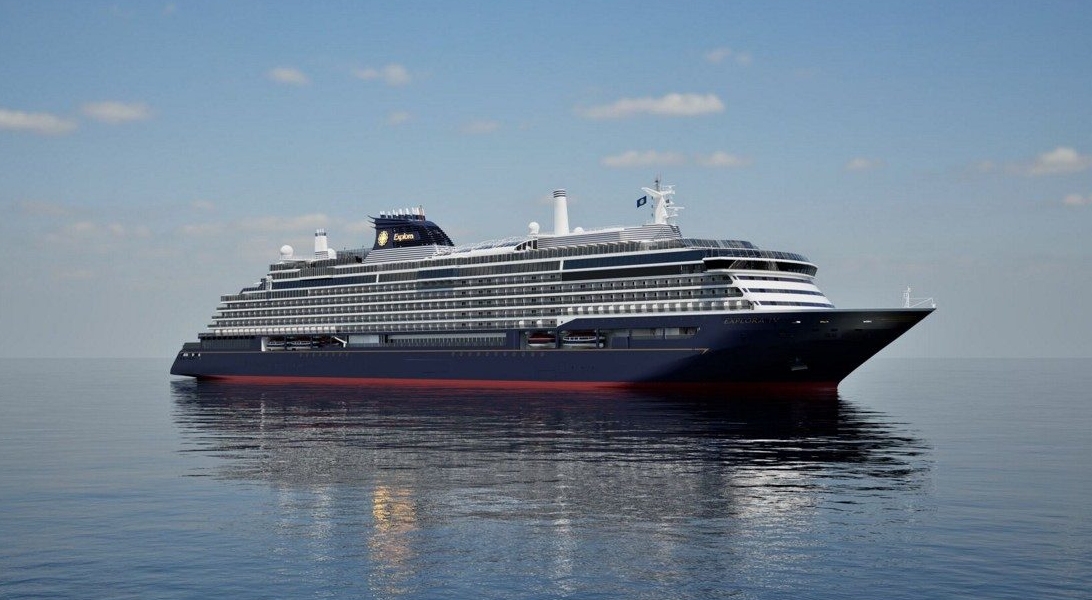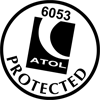| | | | | Arrive | Depart |
| 4th04 | SepSep | 202727 | Reykjavík, Iceland, embark on the EXPLORA IV | | 18:00 |
Sprawling Reykjavík, the nation's nerve center and government seat, is home to half the island's population. On a bay overlooked by proud Mt. Esja (pronounced eh-shyuh), with its ever-changing hues, Reykjavík presents a colorful sight, its concrete houses painted in light colors and topped by vibrant red, blue, and green roofs. In contrast to the almost treeless countryside, Reykjavík has many tall, native birches, rowans, and willows, as well as imported aspen, pines, and spruces.Reykjavík's name comes from the Icelandic words for smoke, reykur, and bay, vík. In AD 874, Norseman Ingólfur Arnarson saw Iceland rising out of the misty sea and came ashore at a bay eerily shrouded with plumes of steam from nearby hot springs. Today most of the houses in Reykjavík are heated by near-boiling water from the hot springs. Natural heating avoids air pollution; there's no smoke around. You may notice, however, that the hot water brings a slight sulfur smell to the bathroom.Prices are easily on a par with other major European cities. A practical option is to purchase a Reykjavík City Card at the Tourist Information Center or at the Reykjavík Youth Hostel. This card permits unlimited bus usage and admission to any of the city's seven pools, the Family Park and Zoo, and city museums. The cards are valid for one (ISK 3,300), two (ISK 4,400), or three days (ISK 4,900), and they pay for themselves after three or four uses a day. Even lacking the City Card, paying admission (ISK 500, or ISK 250 for seniors and people with disabilities) to one of the city art museums (Hafnarhús, Kjarvalsstaðir, or Ásmundarsafn) gets you free same-day admission to the other two. Feel the magnetic lure of adventure at the world’s northernmost capital. Mystical landscapes promise dramatic snow-capped volcanoes, ice fields and mountains for thrilling quests; explore by helicopter, ride Icelandic horses, zip through lava tunnels on super trucks and rocket across glaciers on snow scooters. Then slow down to visit a geothermal-fired bakery and greenhouse, soak in wellbeing springs, the blue lagoon or refresh at the nearby face mask bar. And as the nightlife beckons under the sun that barely sets, drink black death schnapps as a poetic reminder of Reykjavik’s exhilarating activities. |
| 5th05 | SepSep | 202727 | At Sea | | |
| 6th06 | SepSep | 202727 | At Sea | 12:00 | 13:00 |
| 7th07 | SepSep | 202727 | Paamiut (Fredrikshaab), Greenland | 08:00 | 20:00 |
| Keep quiet about Paamiut – it’s the best kept secret in the region. Head off the well-trodden path and be welcomed with mugs of kaffemik coffee and many a story. Noble and colonial-style, the harbourside gives way to brightly coloured, protected buildings - a church, museum and just a few residents. Hike trails through untouched landscapes, spot spiritual white-tailed eagles and find peace in this natural habitat at the entrance to the Kuanersooq Fjord. This place is good for the soul but remember not to tell a soul. |
| 8th08 | SepSep | 202727 | Qaqortoq (Julianehaab), Greenland | 08:00 | 20:00 |
The largest town in southern Greenland, Qaqortoq has been inhabited since prehistoric times. Upon arrival in this charming southern Greenland enclave, it's easy to see why. Qaqortoq rises quite steeply over the fjord system around the city, offering breath-taking panoramic vistas of the surrounding mountains, deep, blue sea, Lake Tasersuag, icebergs in the bay, and pastoral backcountry. Although the earliest signs of ancient civilization in Qaqortoq date back 4,300 years, Qaqortoq is known to have been inhabited by Norse and Inuit settlers in the 10th and 12th centuries, and the present-day town was founded in 1774. In the years since, Qaqortoq has evolved into a seaport and trading hub for fish and shrimp processing, tanning, fur production, and ship maintenance and repair. Step into the boots of Eric the Red and into a city that means white, with green land and colourful houses. Unfold layers of Norse culture, history and nature within Stone & Man carvings and sculptures and explore local fish markets and homebrewed beer. Witness amazing arctic sights of icebergs, glaciers and tundra by boat or helicopter, within the warm waters at Uunartoq Hot Spring, or at your own pace by kayak. Feel your mind and body warmed - from the standard Inuit welcome, to the perfectly balanced climate. |
| 9th09 | SepSep | 202727 | At Sea | | |
| 10th10 | SepSep | 202727 | At Sea | | |
| 11th11 | SepSep | 202727 | Saint-John's, Newfoundland and Labrador, Canada | 08:00 | 18:00 |
Old meets new in the province's capital (metro-area population a little more than 200,000), with modern office buildings surrounded by heritage shops and colorful row houses. St. John's mixes English and Irish influences, Victorian architecture and modern convenience, and traditional music and rock and roll into a heady brew. The arts scene is lively, but overall the city moves at a relaxed pace.For centuries, Newfoundland was the largest supplier of salt cod in the world, and St. John's Harbour was the center of the trade. As early as 1627, the merchants of Water Street—then known as the Lower Path—were doing a thriving business buying fish, selling goods, and supplying alcohol to soldiers and sailors. |
| 12th12 | SepSep | 202727 | Saint Pierre, Martinique | 08:00 | 15:00 |
| 13th13 | SepSep | 202727 | At Sea | | |
| 14th14 | SepSep | 202727 | Quebec City, Québec, Canada | 18:00 | |
Québec City's alluring setting atop Cape Diamond (Cap Diamant) evokes a past of high adventure, military history, and exploration. This French-speaking capital city is the only walled city north of Mexico. Visitors come for the delicious and inventive cuisine, the remarkable historical continuity, and to share in the seasonal exuberance of the largest Francophone population outside France.The historic heart of this community is the Old City (Vieux-Québec), comprising the part of Upper Town (Haute-Ville) surrounded by walls and Lower Town (Basse-Ville), which spreads out at the base of the hill from Place Royale. Many sets of staircases and the popular funicular link the top of the hill with the bottom. Cobblestone streets, horse-drawn carriages, and elaborate cathedrals here are charming in all seasons. The Old City earned recognition as an official UNESCO World Heritage site in 1985, thanks largely to city planners who managed to update and preserve the 400-year-old buildings and attractions without destroying what made them worth preserving. The most familiar icon of the city, Fairmont Château Frontenac, is set on the highest point in Upper Town, where it holds court over the entire city.Sitting proudly above the confluence of the St. Lawrence and St. Charles rivers, the city's famous military fortification, La Citadelle, built in the early 19th century, remains the largest of its kind in North America. In summer, visitors should try to catch the Changing of the Guard, held every morning at 10 am; you can get much closer to the guards here than at Buckingham Palace in London.Enchanting as it is, the Old City is just a small part of the true Québec City experience. Think outside the walls and explore St-Roch, a downtown hot spot, which has artsy galleries, foodie haunts, and a bustling square. Cruise the Grande-Allée and avenue Cartier to find a livelier part of town dotted with nightclubs and fun eateries. Or while away the hours in St-Jean-Baptiste, a neighborhood with trendy shops and hipster hangouts. Prepare to encounter a province thriving with culture and cuisine, history and heritage, and so much more. Explore impressive architecture, intriguing history, imposing landmarks and the treasured streets of UNESCO praised Old Québec. Relax at Parisian-style bistros and modern art exhibitions or choose to partake in thrilling alfresco pursuits. Delve deep into nature to kayak through a fjord, walk the width of Montmorency Falls, zipline, paddleboard, surf and mountain bike in tranquil settings. Home to capital Montréal and an incredibly friendly nation, there’s something for everyone in this mostly French speaking region. |
| 15th15 | SepSep | 202727 | Quebec City, Québec, Canada, disembark the EXPLORA IV | | |
Québec City's alluring setting atop Cape Diamond (Cap Diamant) evokes a past of high adventure, military history, and exploration. This French-speaking capital city is the only walled city north of Mexico. Visitors come for the delicious and inventive cuisine, the remarkable historical continuity, and to share in the seasonal exuberance of the largest Francophone population outside France.The historic heart of this community is the Old City (Vieux-Québec), comprising the part of Upper Town (Haute-Ville) surrounded by walls and Lower Town (Basse-Ville), which spreads out at the base of the hill from Place Royale. Many sets of staircases and the popular funicular link the top of the hill with the bottom. Cobblestone streets, horse-drawn carriages, and elaborate cathedrals here are charming in all seasons. The Old City earned recognition as an official UNESCO World Heritage site in 1985, thanks largely to city planners who managed to update and preserve the 400-year-old buildings and attractions without destroying what made them worth preserving. The most familiar icon of the city, Fairmont Château Frontenac, is set on the highest point in Upper Town, where it holds court over the entire city.Sitting proudly above the confluence of the St. Lawrence and St. Charles rivers, the city's famous military fortification, La Citadelle, built in the early 19th century, remains the largest of its kind in North America. In summer, visitors should try to catch the Changing of the Guard, held every morning at 10 am; you can get much closer to the guards here than at Buckingham Palace in London.Enchanting as it is, the Old City is just a small part of the true Québec City experience. Think outside the walls and explore St-Roch, a downtown hot spot, which has artsy galleries, foodie haunts, and a bustling square. Cruise the Grande-Allée and avenue Cartier to find a livelier part of town dotted with nightclubs and fun eateries. Or while away the hours in St-Jean-Baptiste, a neighborhood with trendy shops and hipster hangouts. Prepare to encounter a province thriving with culture and cuisine, history and heritage, and so much more. Explore impressive architecture, intriguing history, imposing landmarks and the treasured streets of UNESCO praised Old Québec. Relax at Parisian-style bistros and modern art exhibitions or choose to partake in thrilling alfresco pursuits. Delve deep into nature to kayak through a fjord, walk the width of Montmorency Falls, zipline, paddleboard, surf and mountain bike in tranquil settings. Home to capital Montréal and an incredibly friendly nation, there’s something for everyone in this mostly French speaking region. |

